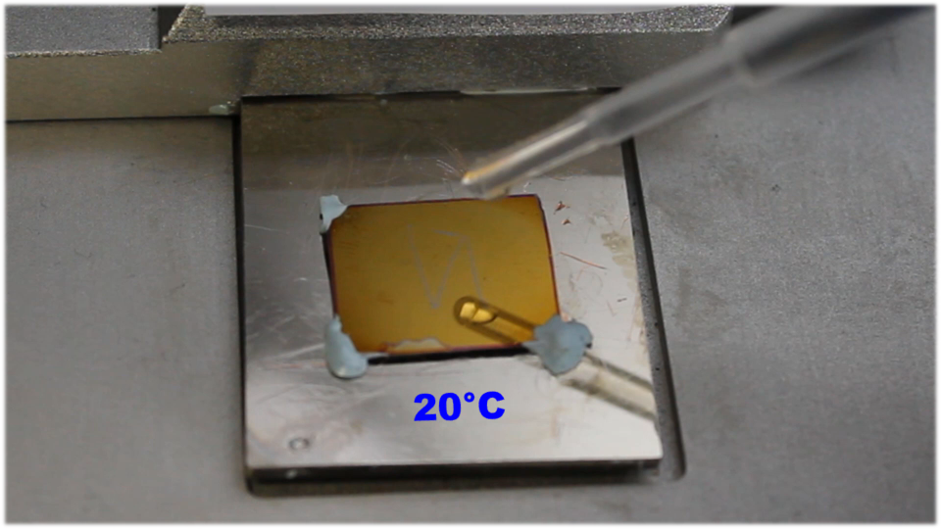
with Christian Fretigny and Guillaume Votte

The physical colors of water drops depend on the thickness of the swollen hydrogel films (beneath the porous gold layer). The change of colors can be activated by temperature: video.

We develop a new generation of photonic crystals with actuatable functions. This is made possible by finely controlling the chemistry and architecture of stimulable hydrogels. The idea is to exploit the platform of nano- and micro-structures of grafted hydrogels to design new photonic crystals in several dimensions: 1D, 2D and 3D. The thermo-responsive properties of hydrogels allow to modulate spectrally on demand the photonic crystals.
The objective is to fabricate Bragg mirrors with strong spectral modulation using a multilayer architecture by alternating periodically (thermo-)responsive hydrogel layers and continuous inorganic layers with high refractive index. A new type of two-dimensional photonic crystals could also be designed by activating (thermally or mechanically) a regular array of hydrogel patches in the lateral plane to modulate the light diffraction properties.

Nous cherchons à développer une nouvelle génération de cristaux photoniques avec des fonctions activables. Cela est rendue possible grâce à la maîtrise de la chimie et de l’architecture des hydrogels stimulables. L’idée est d’exploiter la plate-forme des nano- et micro-structures d’hydrogels greffés pour concevoir de nouveaux cristaux photoniques à plusieurs dimensions : 1D, 2D et 3D. Les propriétés thermo-stimulables des hydrogels permettent de moduler spectralement à la demande les cristaux photoniques.
L’objectif est de réaliser des miroirs de Bragg à forte modulation spectrale grâce à une architecture multicouches en alternant périodiquement couches d’hydrogels (thermo-)stimulables et couches inorganiques continues à haut indice de réfraction. Des cristaux photoniques bidimensionnels d’un nouveau type pourraient également être conçus en activant (thermiquement ou mécaniquement) un réseau régulier de plots d’hydrogels dans le plan latéral pour moduler les propriétés de diffraction de la lumière.
